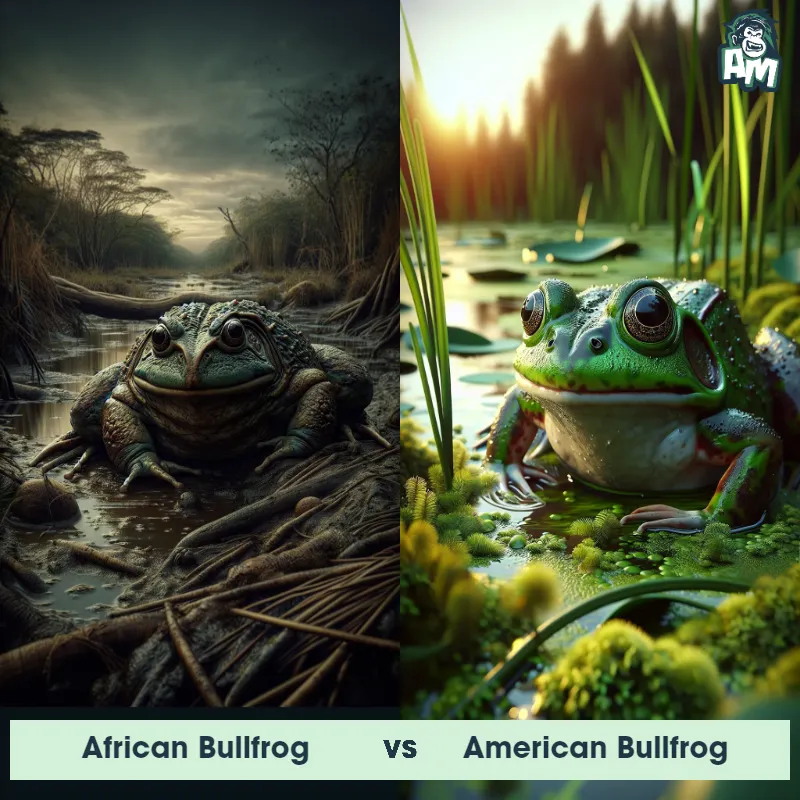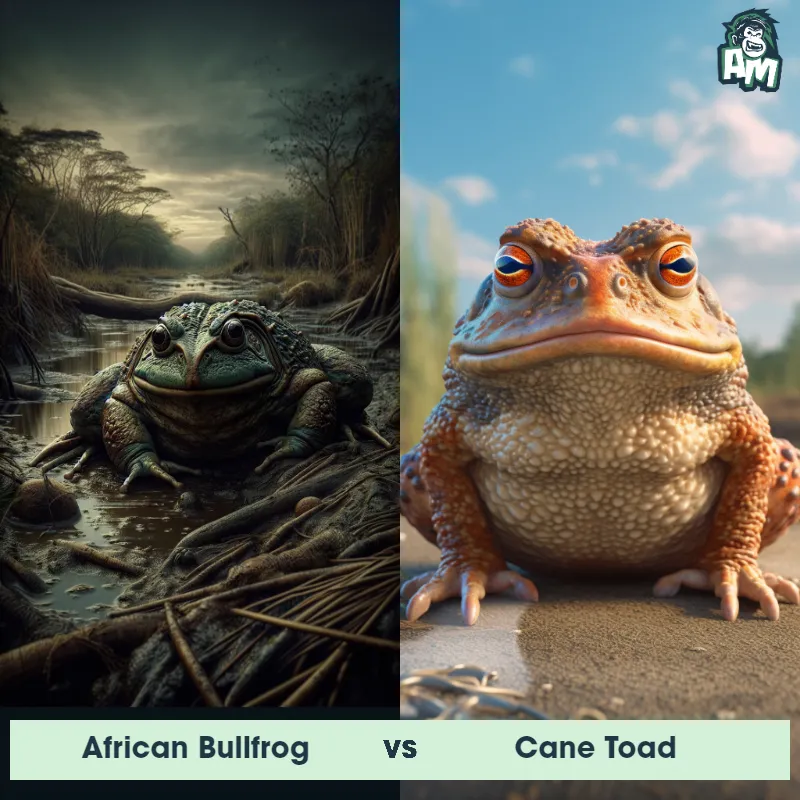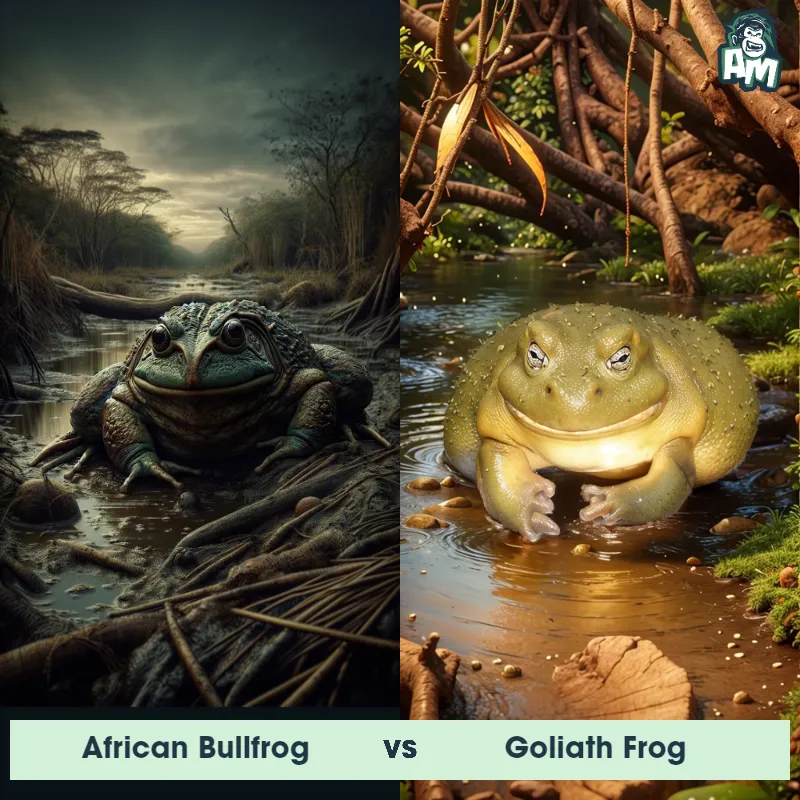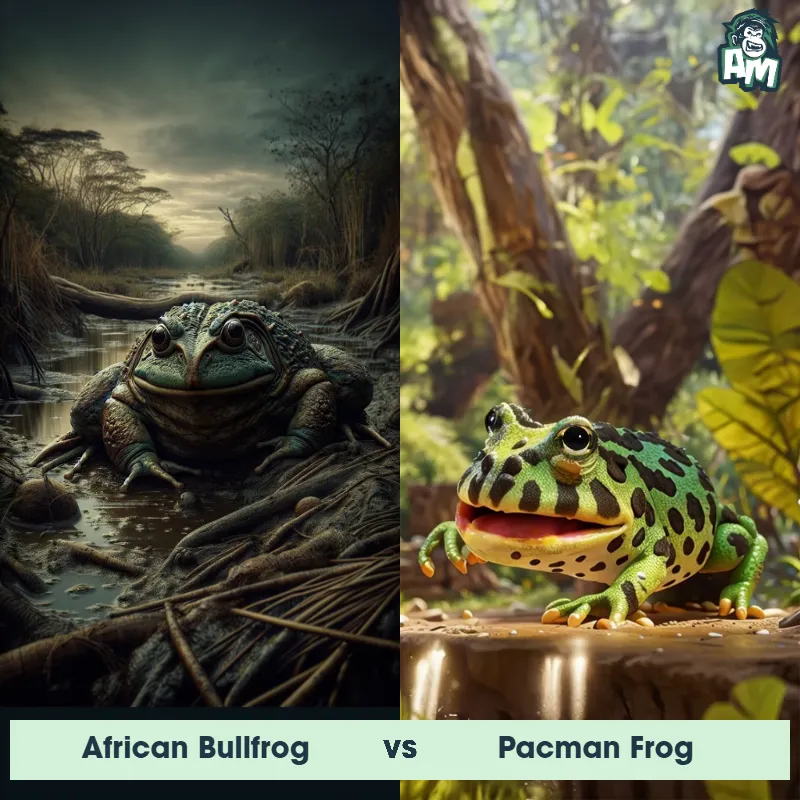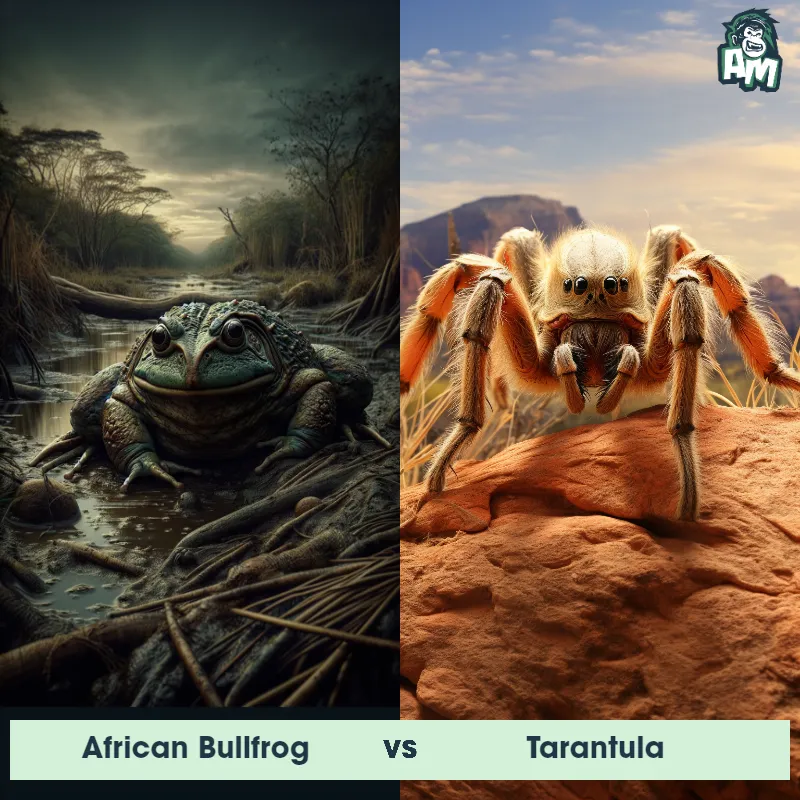The African Bullfrog
The African Bullfrog is a large and robust amphibian known for its distinctive bright orange skin and large mouth. They have powerful hind legs for jumping and catching prey, as well as sharp teeth on their upper jaw. These frogs can grow up to 9 inches in length and are native to southern Africa.

| African Bullfrog | |
|---|---|
| Size | Up to 10 inches (25 centimeters) |
| Weight | Up to 1.4 pounds (650 grams) |
| Speed | 2.4 mph (3.9 km/h) |
| Key Strength | Strong jumping ability |
| Biggest Weakness | Vulnerable to predators due to size and slow movement |
| Scientific Name | Pyxicephalus adspersus |
| Family | Pyxicephalidae |
| Habitat | Freshwater habitats including marshes, ponds, and slow-moving streams |
| Geography | Sub-Saharan Africa |
| Diet | Carnivorous, feeding on a variety of prey including insects, small mammals, and other frogs |
| Lifespan | 5 years - 8 years |

The African Bullfrog
The African Bullfrog is a large and robust amphibian known for its distinctive bright orange skin and large mouth. They have powerful hind legs for jumping and catching prey, as well as sharp teeth on their upper jaw. These frogs can grow up to 9 inches in length and are native to southern Africa.
Fun Fact: The African Bullfrog is known for their aggressive behavior, often taking on animals much larger than themselves, including snakes and even small mammals.
| African Bullfrog | |
|---|---|
| Size | Up to 10 inches (25 centimeters) |
| Weight | Up to 1.4 pounds (650 grams) |
| Speed | 2.4 mph (3.9 km/h) |
| Key Strength | Strong jumping ability |
| Biggest Weakness | Vulnerable to predators due to size and slow movement |
| Scientific Name | Pyxicephalus adspersus |
| Family | Pyxicephalidae |
| Habitat | Freshwater habitats including marshes, ponds, and slow-moving streams |
| Geography | Sub-Saharan Africa |
| Diet | Carnivorous, feeding on a variety of prey including insects, small mammals, and other frogs |
| Lifespan | 5 years - 8 years |
African Bullfrog Matchups
We use AI to simulate matchups between the African Bullfrog and other animals. Our simulation considers size, strength, and natural predatory behaviors to determine the most likely outcome.

Can't find the Matchup you want?
Create Your Own MatchupAfrican Bullfrog: Diet, Predators, Aggression, and Defensive Behaviors
What do African Bullfrogs eat?
African Bullfrogs are carnivorous and mainly feed on insects, small rodents, birds, and other amphibians. They have a voracious appetite and are known to eat almost anything that they can overpower and fit into their mouths.
Do African Bullfrogs have any predators?
Yes, African Bullfrogs have predators in the wild. Some of their natural predators include snakes, birds of prey, large mammals, and other carnivorous animals. However, adult African Bullfrogs are known for their size and powerful defenses, which help them deter predation.
Are African Bullfrogs aggressive?
African Bullfrogs are known for their aggressive nature, especially during the breeding season when males fiercely defend their territory and mates. They can also exhibit aggression towards other frogs and animals that invade their space.
Do African Bullfrogs fight?
Yes, African Bullfrogs are territorial animals and will engage in fights to establish dominance or defend their territory. During breeding season, males can often be seen engaging in fierce combat with rival males to establish their place as the dominant frog.
How do African Bullfrogs defend themselves?
African Bullfrogs have several defense mechanisms to protect themselves from predators and rivals. They have powerful jaws that can deliver a painful bite, and they can inflate their bodies to appear larger and more intimidating. They also possess toxic skin secretions that can deter predators.
What is the African Bullfrog's biggest weakness in a fight?
Despite their size and strength, one of the African Bullfrog's biggest weaknesses in a fight is their relatively slow speed and agility compared to some of their predators or rivals. Their bulky bodies make them less maneuverable, leaving them vulnerable to quicker and more agile opponents.
Fun Fact: During the dry season, African Bullfrogs will burrow themselves underground and form a cocoon-like structure around their bodies, remaining dormant until the rains return.
Fun Fact: Female African Bullfrogs can lay up to 3,000 eggs at once, and the male frogs are responsible for guarding the eggs until they hatch.



